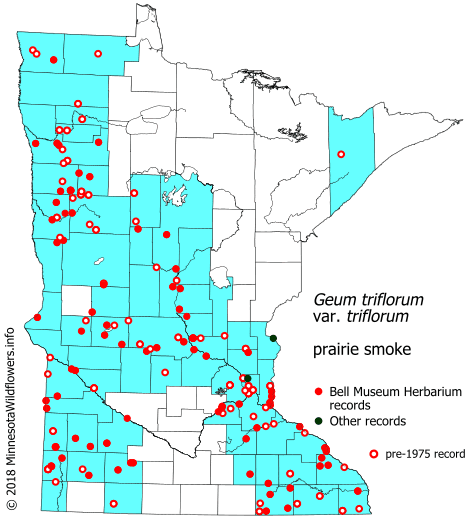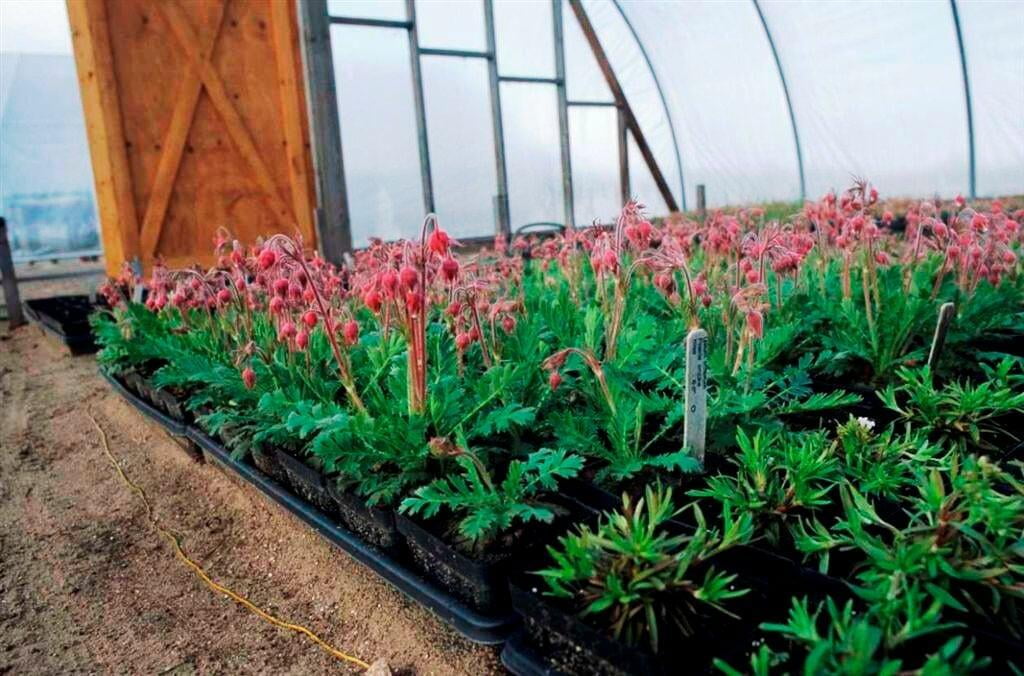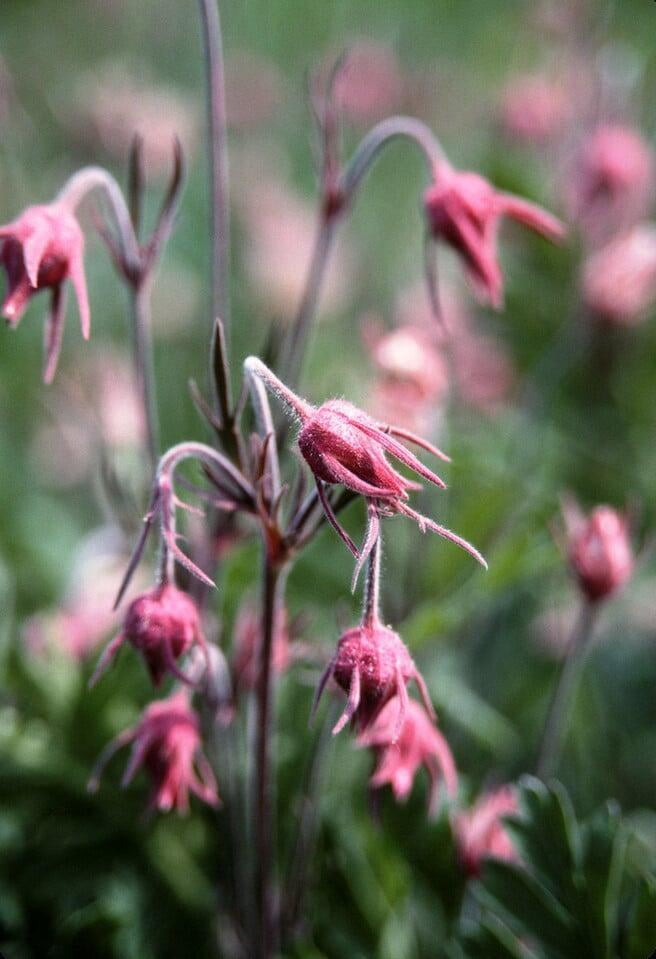Geum triflorum
Prairie smoke Description:
Geum triflorum, commonly known as prairie smoke or old man's whiskers, is a herbaceous perennial plant in the rose family (Rosaceae). It is native to the central and western parts of North America, where it can be found growing in prairies, meadows, and other open habitats.
The plant typically grows to a height of about 16 inches and has a spreading habit with fern-like leaves that are green in color and up to 6 inches (15 cm) long. In the late spring and early summer, it produces nodding, bell-shaped flowers that are typically pink to purple in color and about 1 inch (2.5 cm) in diameter. The flowers have distinctive, feathery, reddish-purple styles that extend above the petals, giving them the appearance of "smoke" or "old man's whiskers."
Geum triflorum is a hardy and easy-to-grow plant that prefers full sun to partial shade and well-drained soil. It is commonly used in prairie gardens, meadow gardens, and other naturalistic landscapes. In addition to its ornamental value, it is also valued for its ecological importance, as it provides habitat and food for a variety of pollinators, including bees and butterflies. It is also drought tolerant, making it a good choice for xeriscaping and other water-wise landscaping practices.
Native Range:
Prairie smoke is native to the Western and North central continental United States.
Standard Plant Information:
Plant Height: 6" - 16" inches
Bloom Time: April - June
Preferred Habitat: Does well in full sun in dry fields and prairies.
Sowing:
For most homeowners, the best option is to scatter seed on the ground by hand broadcasting at a minimum of 16-64 pls ounces per acre. For even coverage, we recommend that you broadcast seed in perpendicular rows across the site to ensure even coverage.
You’ll want to broadcast any grass seed first, which will get raked into the soil lightly. Next, it is ideal to mulch the area lightly with either a clean (no seed) straw or preferably with our native Little Bluestem straw, sold at our retail garden centers. After a light mulching is complete, now it’s time to broadcast your native wildflower seeds, which should not be raked into the soil. A good rain or watering is sufficient to cover the seed.
Planting:
Simply dig a hole in the soil slightly larger than the plant’s roots. Ensure that the soil line of the plant is maintained during the transfer (i.e. the plant should be at the same level with the ground as it was in the pot). Pack any loose dirt back around the plant and make sure you water it well the same day to ensure it has the best chance of survival.











